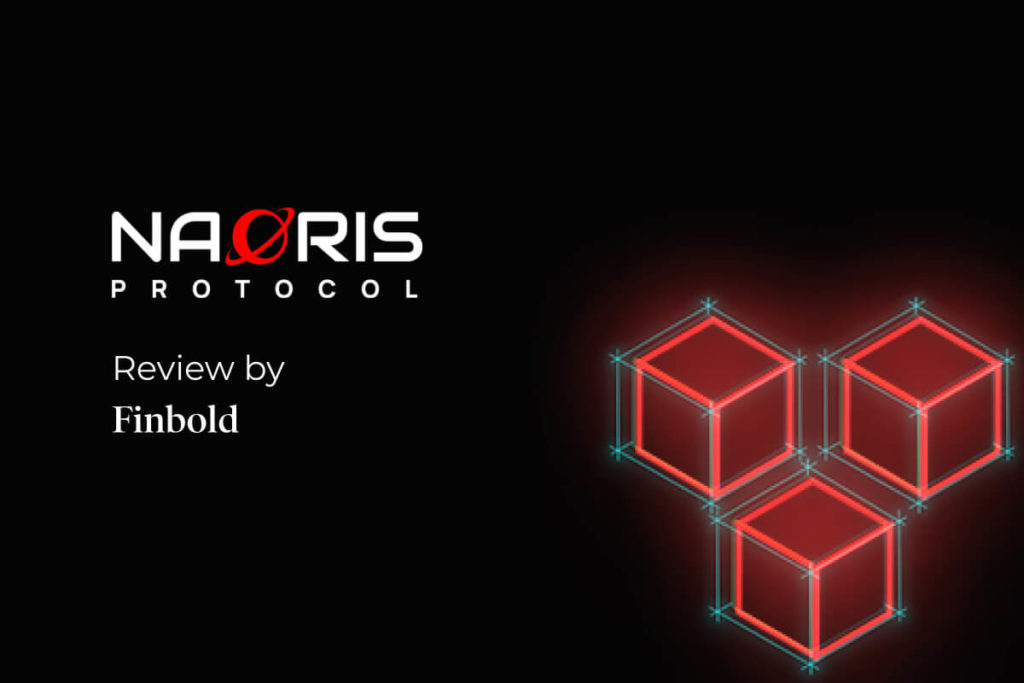In this review, we are exploring the Naoris Protocol, a decentralized cybersecurity network utilizing a novel Hyperstructure ethos to curb the increasing cyber-related security incidents. Specifically, we will consider what the Naoris protocol is, how it proposes to solve the rising cyber insecurity, the guiding Cyberprinciples behind the proposed hyperstructure, and the team behind this project. Additionally, we shall consider the tokenomics of the proposed platform’s native CYBER token, among other aspects.
About Naoris Protocol
As the internet expands, there has been an increase in the number of reported cybersecurity incidents leading to trillions in losses in US dollars. Cybersecurity experts estimate that cybercrime activities will cost the world in excess of $10.5 trillion a year.
There is a need for an effective countermeasure to the growing cyber insecurity as more devices are introduced online. Hence the introduction of Naoris Protocol, a decentralized layer-2 cybersecurity network based on the Ethereum (ETH) blockchain.
Naoris Protocol was launched in 2018 by David Carvalho and Monika Oravcova, then a research project to investigate the effectiveness of a decentralized cybersecurity mesh architecture to counter online insecurity.

With its headquarters in Aveiro, Portugal, Naoris Protocol is among the few blockchain-based solutions attempting to curb the runaway cyber insecurity and introduce safety to the online scene.
From its humble R&D (research and development) beginnings, Naoris is aiming to become a noteworthy player in the online security field as it readies to launch its platform and native token (CYBER) towards the end of 2022. So far, it has attracted large-scale investors, including Draper Associates, Holt Xchange, Holdun Family Office, and Brendan Holt Dunn, among several others.
How Naoris Protocol Works
The concept behind the Naoris Protocol is straightforward. Essentially, the project aims to decentralize the internet as we know it and the increasingly expanding internet of things (IoT), and it proposes to use the blockchain.
Web2, the current iteration of the world wide web, is made of millions of disparate devices operating in silos. Each device is responsible for its security and that of the data under its control. This scenario causes a major flaw that blackhat hackers have exploited for several decades.
Successfully attacking one device within a hyperconnected network could expose an entire network of devices to exploitation.
Naoris proposes to share the security responsibility amongst several devices within the network using what it describes as a decentralized cyber-secure mesh architecture. The protocol would employ a software agent or daemon dApp (decentralized application) installed in each device within a network.
The purpose of this software would be to report the cybersecurity status of the device on which it is installed. The rest of the devices within the network will have to verify the authenticity of this report and watch over the entire network for red flags. This way, the network becomes self-healing and vigilant against external and internal attacks.
The Naoris Protocol is based on a HyperStructure with seven key principles that guide the operation of the entire system. These principles are:
- Being Unstoppable – the network is designed to run indefinitely and does not depend on any single device or entity to operate;
- Permissionless – devices and participants are free to join and exit the network without requiring permission from other devices or third parties. Essentially, the network is designed to be censorship-resistant and should be accessed by anyone globally;
- Minimally Extractive – Naoris Protocol proposes to charge minimal fees to encourage adoption while still not charging too low a fee to facilitate ecosystem development by funding the project treasury within the DAO (decentralized autonomous organization);
- Valuable – the protocol needs to be valuable to the internet community. However, this principle presents a catch-22 scenario whereby for it to become worthwhile, it needs to be widely adopted, but for that to happen, potential users need to perceive it as being invaluable;
- Expansive – the Naoris Protocol is designed to accommodate a thriving future community with ever-increasing users, nodes, devices, and network participants that depend upon the network’s existence;
- Positive Sum – every participant within the Naoris ecosystem should experience a win-win situation. For instance, the node operators can earn native tokens for engaging in the verification of the connected devices while the devices benefit from real-time security audits of systems by the nodes and operating within a secure environment;
- Credibly Neutral – all network participants who, expectedly, have varying needs and priorities can expect to benefit from the network neutrally without unfair treatment while all devices have equal access to available resources.
It is worth noting that within the proposed Naoris Protocol Cybersecurity Mesh, devices currently connected to one another according to the conventional network principles will remain the same. What changes is how these devices behave as they interact with one another.
All networked devices will be active participants in safeguarding the network as opposed to being passive network nodes.
Consensus Mechanism: Decentralized Proof of Security (dPoSec)
Naoris Protocol is a layer-2 blockchain on the Ethereum network, which means it piggybacks on the security of the leading altcoin, itself a decentralized network. Ethereum, one of the largest blockchains currently, makes its security more robust than most other networks, and this feature is inherited by tokens and third-party infrastructure built on top of it, including the Naoris Protocol.

However, the Naoris network employs a proprietary and novel consensus mechanism unique and ideal to cybersecurity needs called dPoSec (decentralized Proof of Security). The mechanism has the following key features:
- Distributed or shared security – all network devices work in tandem to identify and possibly eliminate security risks and threats;
- Specific application – unlike most of the popular consensus mechanisms used by various blockchains, such as Proof of Work (PoW) and Proof of Stake (PoS), which are designed for general-purpose applications, dPoSec is uniquely designed to solve the cyber insecurity challenge;
- Earn As You Secure – devices within the Naoris Protocol network are rewarded according to native tokens staked and their work in securing the platform. The staked tokens are also used as an incentive for good behavior, similar to how the PoS mechanism operates;
- Scalable – dPoSec consensus mechanism is highly scalable with the capability to process between 50K and 1 million transactions every second. High throughput ensures that the network is fast and efficient, which increases its appeal within cyberspace;
- Eco-friendliness – compared with the PoW consensus mechanism used by popular blockchains such as Bitcoin, dPoSec is much more sustainable and environmentally friendly. It’s worth noting that Ethereum, the host blockchain that supports the Naoris Protocol, is currently using PoW. However, Ethereum’s core development team is working on an upgrade to migrate the network to a PoS network making it more energy-efficient;
- Risk Management by Design – Naoris has adopted the unique Swarm Intelligence AI (artificial intelligence) that can learn each device’s needs and behavior patterns to decipher and isolate threats in real-time.
Through dPoSec, Naoris will be able to maintain a vibrant cyber secure environment in collaboration with the native CYBER token.
Tokenomics: CYBER Token
The CYBER token is used as a utility asset within the Naoris Protocol ecosystem enabling seamless value transfer. It is yet to launch on the market; therefore, the DAO has not yet released the tokenomics (token + economics) figures.
According to the Naoris whitepaper, CYBER is designed to incentivize processes such as device validation, encourage adoption of the protocol and act as a potential reward for various parties within the Naoris community.

Devices that have been assigned validator roles can find utility within the CYBER token in two ways:
- Stake CYBER to incentivize acceptable behavior as they carry out their roles as misbehaving validators risk losing their staked tokens;
- Rewards in the form of CYBER tokens for services offered within the Naoris ecosystem and trust accumulated, thereby bringing positive value to the network.
Other participants within the Naoris Protocol ecosystem can also earn CYBER tokens for contributing positively toward the safety of other devices by sharing threat intelligence that leads to securing the platform. As a value token, investors can also buy, sell or trade it for profit once it is released to the open market.
All in all, the CYBER token will be instrumental in fueling the entire Naoris Protocol ecosystem.
Is Naoris Platform Safe?
The Naoris Platform is yet to launch, and therefore we cannot, at the time of publishing this article, make a determination on the safety of the protocol. However, it is worth pointing out that Naoris has been designed to enhance safety and security within the vast cyberspace.
The protocol has proposed a decentralized cybersecurity mesh involving previously untrusted network devices that will now be incentivized to become cybersecurity node validators.
The idea proposed by Naoris is both novel and well articulated, but we will be able to judge its practicality and effectiveness once it launches to the public.
That, notwithstanding, Naoris has undertaken a KYC (know your customer) verification audit through AssureDefi. The company enables crypto developers to remain anonymous while offering confidence to investors that the individuals behind projects have been verified.

In the case of the Naoris Protocol, the founders and team members are publicly known, but having the extra verification can be considered added assurance to investors. According to the KYC audit, Naoris scored a tier-1 rating across all three categories, which are treasury, contract, and liquidity.
Naoris Customer Support and Reputation
So far, as of Q3 2022, Naoris is in its concept refining stage as we await its launch before the end of the year. Therefore, it will only be possible to gauge its reputation upon its launch.
The team behind the project, however, is reputable, led by the project co-founders David Carvalho and Monica Oravcova. Collectively, the core team has more than twenty years of experience within the cybersecurity and information technology fields.
You can find further information on the project and interact with the team on their multiple online channels listed below:
- Website: https://naorisprotocol.com/
- Twitter: https://twitter.com/NaorisProtocol
- Telegram Announcement Channel: https://t.me/NaorisAnn
- Telegram Chat: https://t.me/+E976qpBGhLw3MzA0
- LinkedIn: https://www.linkedin.com/company/naoris-protocol
- Discord: https://discord.gg/WkUE7aVBXU
- Instagram: https://www.instagram.com/naoris.protocol/
Final thoughts
As more individuals, economic entities, and governmental and non-governmental organizations join the online community, the need to curb the rampant cyber insecurity becomes ever so urgent. Naoris Protocol is just but one of the bold proposals to address this issue.
Its success or failure will depend not just on the team making the proposal but also on the community of potential users. The ideas may seem solid, but given the dynamic nature of the online space, their effectiveness will have to be judged by their adaptability and positive contribution.
Disclaimer: The content on this site should not be considered investment advice. Investing is speculative. When investing, your capital is at risk.
Frequently Asked Questions on Naoris Protocol
What is Naoris Protocol?
Naoris is a decentralized cybersecurity network designed to revolutionize the approach to online safety, security, and communications. The platform is designed as a Layer-2 blockchain pegged to the Ethereum network helping it benefit from the security of the leading altcoin blockchain without having to deal with its scalability issues.
What is Naoris Protocol’s value proposition?
Naoris aims to protect every device connected to the internet against malicious attacks from hackers and other nefarious online agents by incentivizing inter-network security vigilance. The platform looks to capitalize on the already available devices to scan, report and thwart security threats against other devices.
How is Naoris Protocol related to Ethereum?
Naoris is a Layer-2 blockchain based on the Ethereum network. Its protocol runs on a fully-fledged semi-independent blockchain with its consensus mechanism called dPoSec (decentralized proof of security). However, it does benefit from the security of Ethereum by virtue of its blockchain being created on top of it.
What is the utility of the CYBER token?
CYBER tokens are created to serve as utility assets within the Naoris platform. They are designed to incentivize appropriate behavior from validator nodes that need to stake their tokens. Additionally, they can be used as a reward mechanism for devices that help identify threats and solutions within the protocol. Essentially, CYBER is the fuel that powers the entire Naoris ecosystem.




